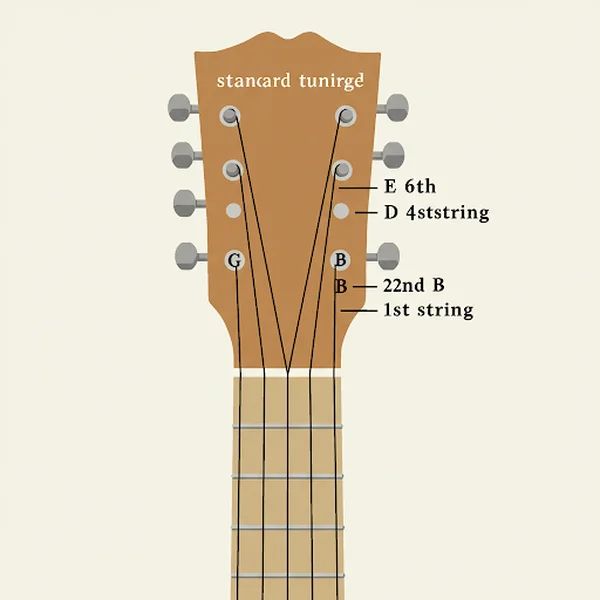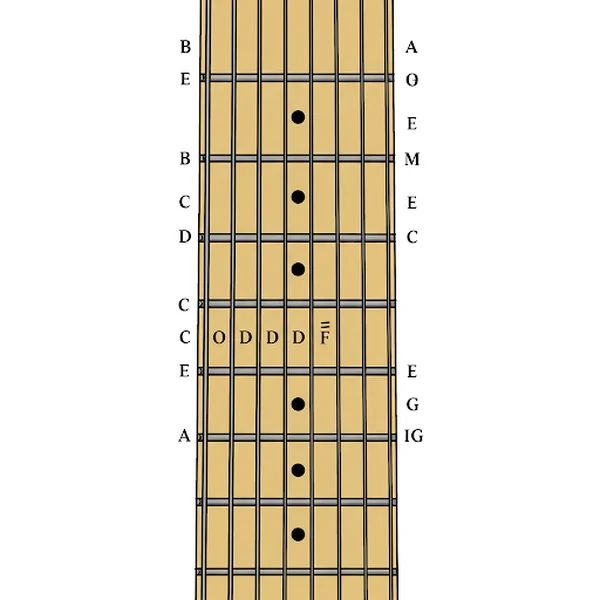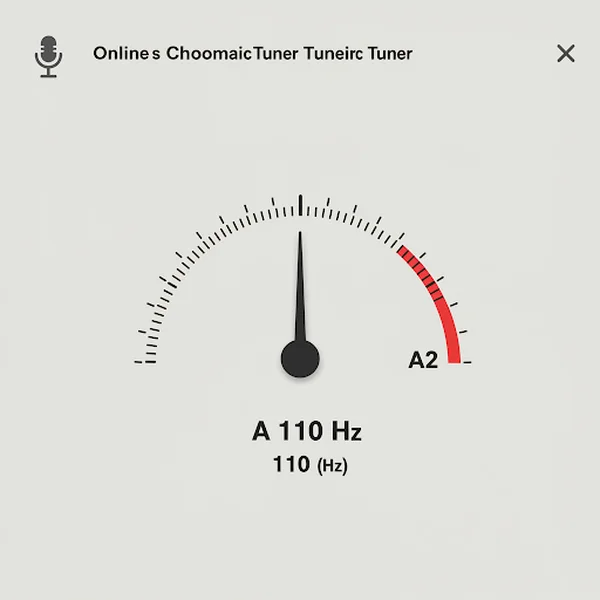Understanding Standard Guitar Tuning (EADGBE): The Foundation
Tuning your guitar is often the very first step every guitarist learns, but have you ever stopped to wonder why we tune it the way we do? Knowing how to use a tuner is crucial, but understanding the what and why behind standard guitar tuning (EADGBE) can truly elevate your playing and musical understanding. What is standard guitar tuning anyway, and why is it so important? This guide dives into the fundamentals of EADGBE, explaining its structure, significance, and why it's the bedrock for most guitarists worldwide. Getting this right is key, and you can ensure you're hitting the right notes with an accurate online tuner.
What Exactly Is Standard Guitar Tuning (EADGBE)?
At its core, standard tuning refers to the specific pitches each of the six strings on a guitar is tuned to. It's the most common configuration used across almost all genres of music and serves as the default starting point for learning the instrument. Think of it as the musical alphabet setting for your guitar. How are the notes actually arranged?
The Notes Explained: From Low E to High E
When holding a standard six-string guitar in playing position, the strings are numbered 1 through 6, starting from the thinnest string closest to the floor (1st) to the thickest string closest to your head (6th). In standard tuning, these strings correspond to the following notes:
- 6th String (Thickest): E (Specifically, E2 - the second E on a piano keyboard) - Lowest pitch.
- 5th String: A (A2)
- 4th String: D (D3)
- 3rd String: G (G3)
- 2nd String: B (B3)
- 1st String (Thinnest): E (E4 - two octaves higher than the 6th string) - Highest pitch.
So, E-A-D-G-B-E represents the notes from the lowest-pitched string to the highest-pitched string. Knowing this guitar strings order is fundamental.

Why These Specific Notes? The Logic Behind EADGBE
But why EADGBE? This specific sequence wasn't chosen randomly. It evolved over time because it offers a practical balance for playing both chords and melodies. The intervals (the pitch distance) between most adjacent strings are perfect fourths (E to A, A to D, D to G, B to E). The exception is the interval between the G and B strings, which is a major third. This combination makes many common chord shapes (like open chords C, G, D, A, E) and scale patterns relatively comfortable and efficient to finger across the fretboard. It provides a logical framework for guitar intervals that works well for most musical situations.

Pitch Perfection: Understanding Frequency and A440
Every musical note corresponds to a specific sound wave frequency, measured in Hertz (Hz). Higher frequencies mean higher pitches. The internationally recognized standard reference pitch is A=440Hz, often called "Concert Pitch". This means that in standard tuning, the open 5th string (A) should vibrate 440 times per second if it were A4, but the guitar's A string is A2, which vibrates at 110 Hz. The A4=440Hz standard is the reference point, and all other notes are derived from it. The specific frequencies for EADGBE are:
- E2 ≈ 82.41 Hz
- A2 = 110.00 Hz
- D3 ≈ 146.83 Hz
- G3 ≈ 196.00 Hz
- B3 ≈ 246.94 Hz
- E4 ≈ 329.63 Hz
Achieving these exact frequencies ensures your guitar is truly in tune, which is precisely what tools like our online tuner help you achieve. What frequency is standard tuning based on? It's based on the A4 = 440Hz standard, which dictates the specific frequencies for each EADGBE note.

The Importance of Standard Tuning
Mastering standard tuning isn't just about following instructions; it's about unlocking the guitar's potential and connecting with the broader musical world. Why is sticking to this correct guitar tuning so vital, especially when starting out?
A Universal Language: Learning and Collaborating
EADGBE is the lingua franca of the guitar world. The vast majority of tutorials, song transcriptions (tabs), chord charts, and educational materials assume standard tuning. Learning in EADGBE means you can instantly access and understand these resources. Furthermore, it allows you to easily play along with recordings or collaborate with other musicians (guitarists, bassists, pianists, etc.) who are almost certainly using standard pitch references. It ensures everyone is playing in tune together.
The Building Blocks: Chords, Scales, and Music Theory
The structure of EADGBE is intrinsically linked to how fundamental guitar intervals, chord shapes, and scale patterns are formed and taught. Common open chords and barre chords, as well as essential scales like the pentatonic and major scales, are designed around the relationships between strings in standard tuning. Understanding EADGBE provides the essential context for learning music theory basics as applied to the guitar. Mastering these is easier when your instrument is correctly tuned using a reliable online tuning tool.
Sounding Right: Tuning and Basic Intonation
A guitar tuned precisely to standard EADGBE simply sounds "right". It ensures that chords resonate correctly and melodies flow smoothly. Proper tuning is the first and most crucial step towards achieving good intonation – meaning the guitar plays in tune not just on the open strings, but all across the fretboard. Guitars are typically set up by manufacturers assuming standard tuning, so adhering to it helps maintain tuning stability and ensures the instrument performs as intended. How does standard tuning affect my guitar's sound? It ensures notes relate to each other correctly, making chords sound harmonious and melodies clear.
Beyond the Basics: Standard Tuning as a Starting Point
While EADGBE is the standard, it's essential to view it as the foundational guitar basics rather than the only option.
The Gateway to Alternate Tunings
Once you have a solid grasp of standard tuning, you can begin exploring the exciting world of alternate tunings. Tunings like Drop D (DADGBE) or Open G (DGDGBD) change the intervals between strings, opening up new sonic possibilities, making certain chords or riffs easier to play, and lending themselves to specific genres like rock, blues, or folk. However, understanding EADGBE provides the necessary reference point to appreciate and correctly execute these variations. Is EADGBE the only tuning? Definitely not, but it's the crucial starting point you need to master first.
The Power of EADGBE
Standard Guitar Tuning (EADGBE) is far more than just a random sequence of notes. It's a well-established system based on practical intervals, anchored by the A440 pitch standard, that serves as a universal language for guitarists. It simplifies learning, facilitates collaboration, and forms the basis for understanding chords, scales, and music theory on the guitar. Mastering it is the essential first step on your journey as a guitarist.
Ready to put your understanding into practice? Try our accurate tuner now and use our precise online tool today!
Frequently Asked Questions about Standard Guitar Tuning
Here are answers to some common questions guitarists have about standard tuning:
What frequency (Hz) are the standard guitar tuning notes?
The approximate frequencies for standard EADGBE tuning (based on A4=440Hz) are: E2 ≈ 82.4 Hz, A2 = 110 Hz, D3 ≈ 146.8 Hz, G3 = 196 Hz, B3 ≈ 247 Hz, and E4 ≈ 330 Hz. An accurate tuner targets these precise frequencies.
Is standard tuning the only way to tune a guitar?
No, definitely not! There are countless alternate tunings used in various musical styles (Drop D, Open G, DADGAD, etc.). However, EADGBE is the most common and the standard starting point for learning and for most published music. Understanding it well makes learning alternate tunings easier.
How do I know my guitar is perfectly in standard tuning?
How do I know my guitar is tuned right? The most reliable way is to use an accurate electronic tuner. Visual feedback on tuners shows when you hit the exact pitch for each string (E, A, D, G, B, E). For fine-tuning or checking by ear, you can use techniques like comparing the 5th fret of one string to the open string above it (except for the G/B strings), or checking harmonics at the 5th and 7th frets. Using a reliable tool like our online guitar tuner is your best bet for accuracy.